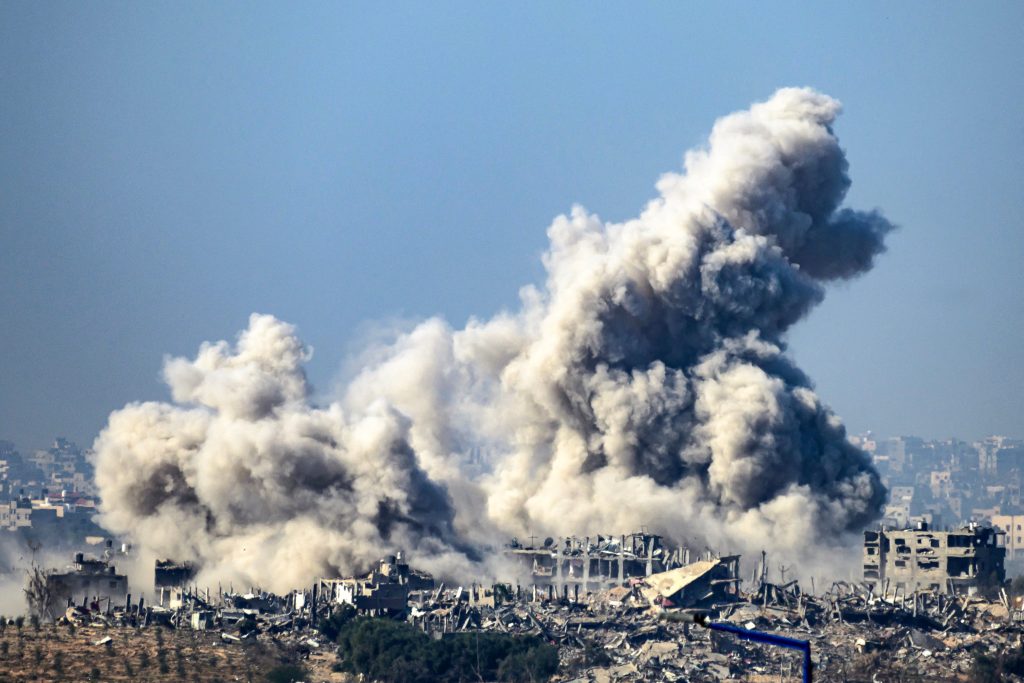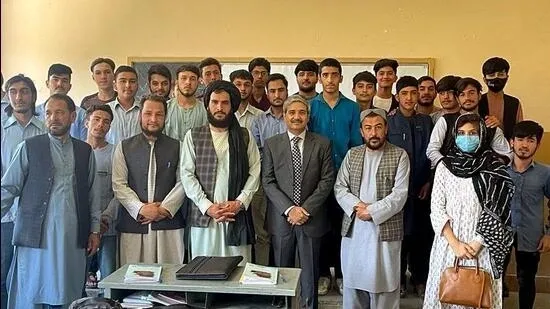By Professor Habib Al Badawi
The conflict in Gaza, often relegated to headlines, unravels a complex web of geopolitical intricacies that transcend mere military exchanges between Israel’s government, led by Benjamin Netanyahu, and Hamas in Palestine. Beyond this focal point, the struggle has evolved into a delicate balance of terror, resonating across the region.
This conflict, intertwined with the contentious relationship between Israel and Hezbollah, has become a pivotal stage for regional powers and global alliances, highlighting a nuanced interplay of security, diplomacy, and power politics.
Amidst relentless confrontations, the repercussions extend far beyond territorial boundaries, shaping the dynamics between nations and influencing broader strategic recalibrations in the Middle East.
The Gaza war goes beyond its initial headlines, addressing military and security scores between Israel’s Benjamin Netanyahu-led government and Hamas in Palestine. It is seen in the “balance of terror” between them, withdrawing from the battle’s display in southern Lebanon to Israel’s confrontation with Hezbollah. The American rearrangement of its stance with Israel, Iran, Saudi Arabia, and Turkey also reflects its “investment” in the region.
“Truce” and “ceasefire” strongly assert themselves after Israel’s exhaustive use of strength without achieving stated goals. It could not eliminate Hamas, dismantle the “Qassam” Brigades’ military structure, or undermine Hamas’ military or political leadership. Though it succeeded in killing some field commanders, it did not significantly impact Hamas’ field performance.
Throughout Operation Al-Aqsa Flood and beyond, Israel committed unprecedented humanitarian crimes against Gaza and the Palestinian people, failing militarily and influencing Western public opinion to consider the Palestinian cause politically, not merely as a humanitarian issue.
Netanyahu’s war government sought to compensate for its failures in Gaza by escalating confrontations with Hezbollah. However, American calculations aimed to prevent a wider regional war, coinciding with a waning international rally around Israel’s actions in Gaza. This reassured Hezbollah and Iran but restrained their actions within specific limits to avoid angering Washington.

Hezbollah engaged in confrontation under the condition of not expanding the war, offering an opportunity for mutual testing between the group and Israel. Yet, this has not concluded and remains open to surprises from both sides.
Despite Israel’s demonstrated security and intelligence capabilities, Hezbollah successfully monitored and targeted Israeli soldiers and officers while destroying many military sites. Israel excelled at targeting military and security centers and Hezbollah fighters, explaining the disparity in casualties between the two sides.
The rules of engagement prioritized targeting military personnel while avoiding civilians, which Israel adhered to more effectively than Hezbollah. There’s speculation about potential assassinations on Lebanese soil targeting Hamas or other officials. The conflict might shift toward security operations, emphasizing military and security confrontations rather than widespread warfare.
Amidst the declared and covert wars, the U.S. is strategically rehabilitating Israel’s image. This broader strategy aims to realign Israel’s policies more closely with U.S. interests, counteracting Netanyahu’s independent approach that concerned Washington. This shift also involves managing relations with Turkey, Saudi Arabia, and Iran. The conflict reflects a larger battle between Netanyahu and the Biden administration, highlighting tensions over Israel’s independence in policymaking, especially regarding its Middle Eastern relationships and alignment with the U.S.
As the dust settles from relentless conflicts and calculated manuevers, enduring lessons emerge. The Gaza conflict, mirroring larger geopolitical rivalries, underscores the delicate balance of power, the nuances of warfare, and the intricate dance between statecraft and security. Yet, amidst this complexity, the human toll, humanitarian crises, and the quest for peace in a region plagued by strife stand as poignant reminders.
The interplay between Israel, Palestine, Hezbollah, and other regional players remains a tapestry of competing interests and unspoken alliances. The pursuit of lasting peace demands a reevaluation of strategies, commitment to dialogue, and recognition of shared humanity beyond political boundaries.
In this ever-evolving saga of strife and diplomacy, enduring hope remains amidst geopolitical intricacies and power dynamics; the quest for peace, justice, and a shared future will prevail over the echoes of war and division.
Here is a breakdown:
- Broader Geopolitical Context: The Gaza conflict is seen as part of a broader strategy by the U.S. to rehabilitate Israel’s image and restore its relationship, aiming to steer Israel away from an independent policy path that might challenge U.S. interests in the region. This rehabilitation also involves managing relationships with other key regional players like Turkey, Saudi Arabia, and Iran.
- Future scenarios: There’s speculation about potential assassinations on Lebanese soil targeting Hamas or other officials. The text suggests a shift towards security operations with a focus on military and security confrontations rather than broad-scale warfare.
- Gaza Conflict Dynamics: The conflict between Israel and Hamas in Gaza did not result in Israel achieving its stated goals. Despite significant efforts, Israel could not eliminate Hamas or dismantle its military infrastructure. The conflict also led to humanitarian crises and increased global attention to the Palestinian cause.
- Hezbollah vs. Israel Dynamics: Israel’s advanced communication and monitoring abilities were highlighted, aiding in targeting Hezbollah personnel. However, Hezbollah managed to inflict casualties on Israeli soldiers and damage military sites. Both sides attempted to adhere to the rules of engagement, focusing on targeting military entities rather than civilians.
- Netanyahu vs. Biden Administration: The text hints at a larger battle between Benjamin Netanyahu and the Joe Biden administration, suggesting a struggle over Israel’s independence in policymaking, especially concerning its relationships in the Middle East and its alignment with the U.S.
- Wider Regional Dynamics: The conflict spilled over to involve Hezbollah, with Israel attempting to prevent a broader regional war. Both Hezbollah and Israel engaged in confrontations, evaluating each other’s capabilities and limits. Israel demonstrated superior intelligence and security capabilities but faced challenges targeting Hezbollah fighters without causing civilian casualties.
In a world resonating with echoes of conflict, the story of Gaza transcends mere headlines, weaving a complex narrative of geopolitical intricacies and profound human struggles. This microcosm of tension and strife in the Middle East encapsulates a multifaceted tale that extends far beyond the physical borders of the region.
The clashes between Israel’s government, led by figures like Benjamin Netanyahu, and Palestinian factions, particularly Hamas, paint a vivid picture of power dynamics, military confrontations, and strategic maneuvers. Yet, within this localized struggle lies a web of connections, intertwining regional players, global alliances, and intricate power politics.
Gaza’s genocide stands as a pivot, a stage upon which broader dynamics play out. It is not confined to a mere territorial dispute; it is a canvas onto which geopolitical forces are painted, each brushstroke reflecting the delicate balance of terror and the intricate dance of security and diplomacy.

At its core, this conflict is not just about military scores settled between adversaries; it is a saga echoing the aspirations, hopes, and sufferings of millions caught in the crossfire. The relentless confrontations have morphed into a larger narrative, revealing the fragility of peace and the complexities of coexistence.
Amidst the clash of arms and ideologies, the humanitarian toll cannot be ignored. The people of Gaza, and indeed the broader Palestinian populace, endure unfathomable hardships. The conflict has imposed unimaginable suffering, with humanitarian crises exacerbating an already dire situation. But this narrative is not confined solely to Gaza’s borders. It stretches across the region, entangling itself in the contentious relationship between Israel and Hezbollah, maneuvering through the intricate tapestry of U.S. foreign policy, and influencing the delicate balance of power among neighboring nations.
Finally, as the dust settles from the relentless conflicts and strategic maneuvers, the enduring lessons resonate deeply. Beyond the geopolitical intricacies and power struggles lies a poignant reminder of the human toll—the lives lost, the families shattered, and the communities scarred by perpetual strife.
About the Author

Habib Badawi is Professor of International Relations and Japanese History at Lebanese University. He is also the coordinator of American Studies and a sought-after academic consultant.
Professor Al-Badawi was awarded “The Academic Figure of 2018” by the “Asian Cultural Center” for his persistent efforts in promoting Japanese studies worldwide. Dr. Habib Al-Badawi has published multiple books and research papers on contemporary topics related to international relations and geopolitics.




